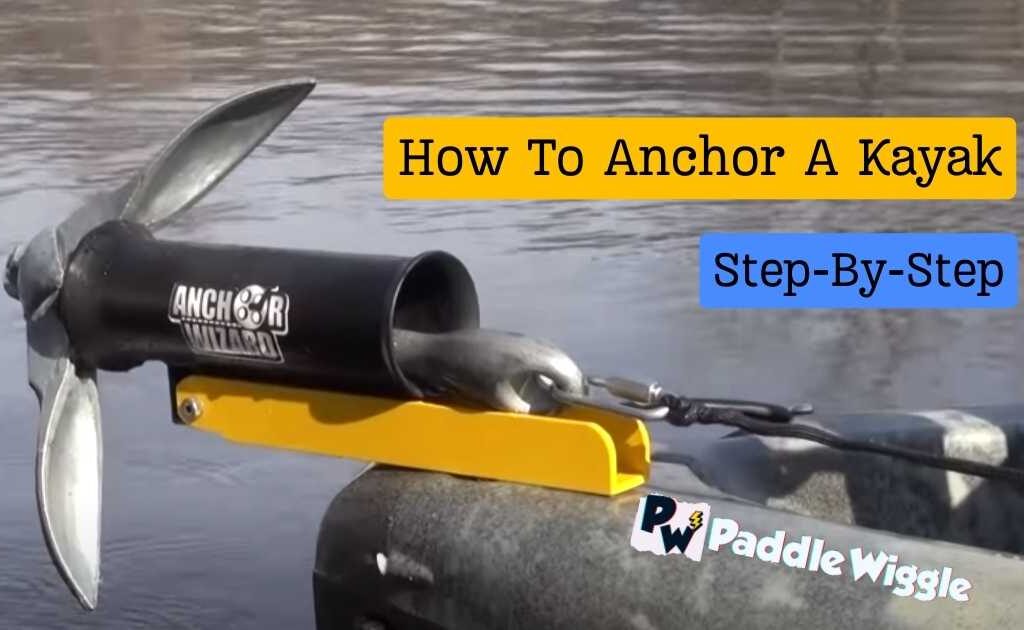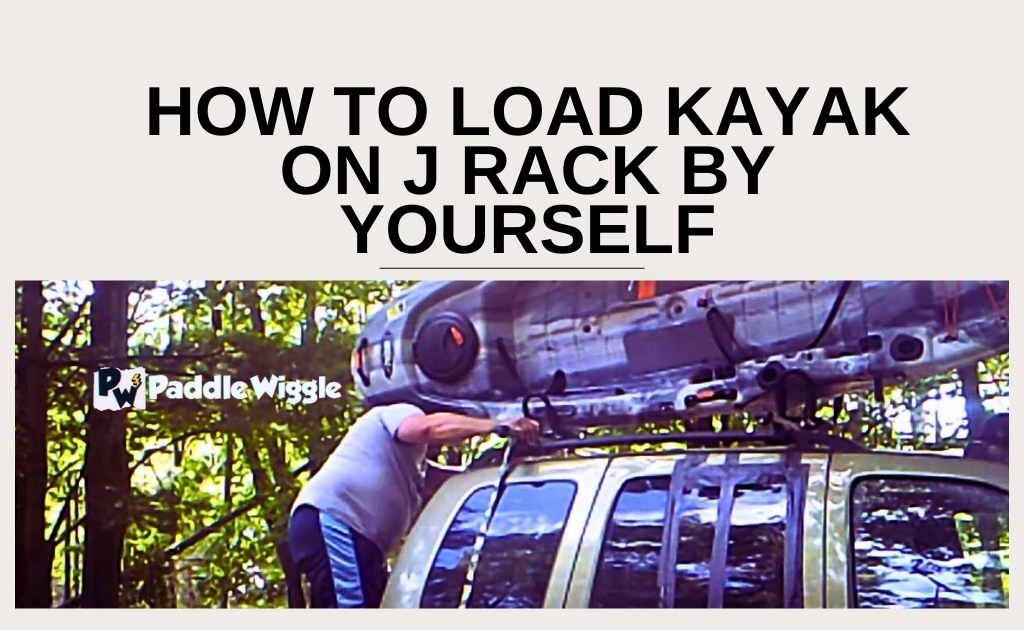Have you ever wondered what to do if your kayak flips? It’s a situation that can catch even the most experienced kayakers off guard. But here’s the thing: being prepared is key. Understanding what to do in this situation can make all the difference between panic and control.
Picture this: you’re out on the water, enjoying the tranquility, when suddenly, your kayak flips. It’s a moment of chaos, but if you’ve familiarized yourself with the necessary steps for recovery, you’ll be able to handle it like a pro.
Accidents can happen suddenly, so it’s better to be safe. We’ll start this article by exploring the consequences of a capsized kayak. Then we’ll present a step-by-step guide to recovering from a flipped kayak, different techniques for righting your flipped kayak, and more.
Contents
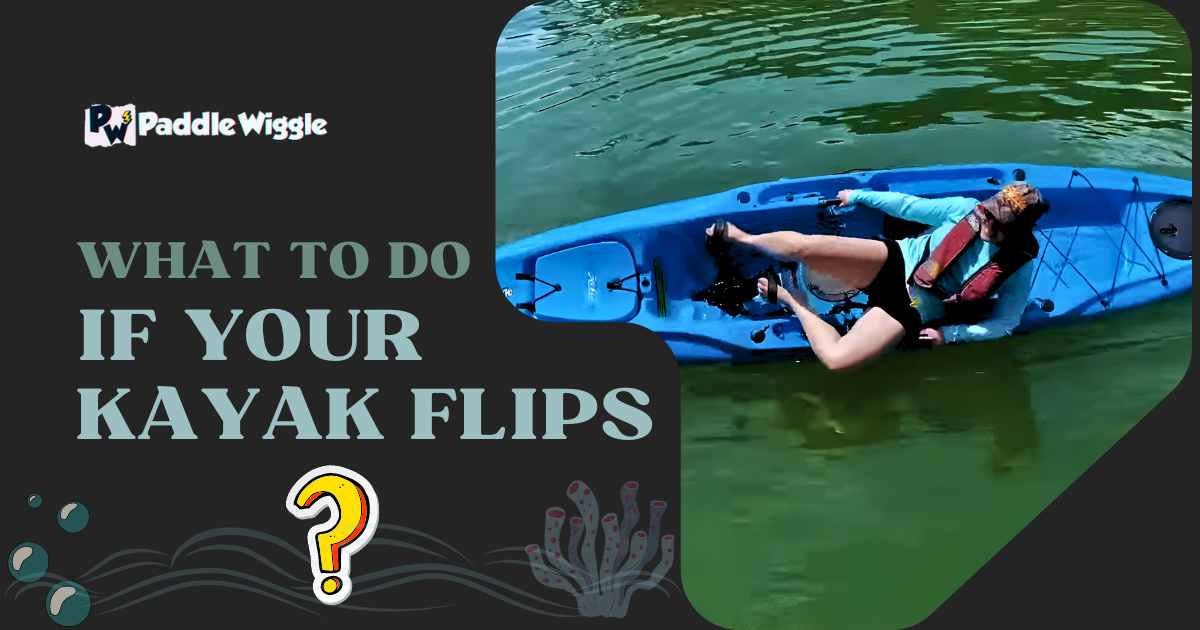
What Happens if a Kayak Flips: Understanding the Consequences of A Capsized Kayak
Kayaking is an exciting and fun activity that lets you enjoy nature and explore beautiful waterways. But when a kayak flips over, it can lead to some serious problems. You could get very cold and be at risk of hypothermia. There’s also a chance of getting hurt, and the water conditions can make it harder to get back in your kayak.
That’s why all kayakers need to know what can happen if this occurs, so they can be ready to handle any dangers and learn how to recover safely.
Submerged in Cold Water and Hypothermia Risk
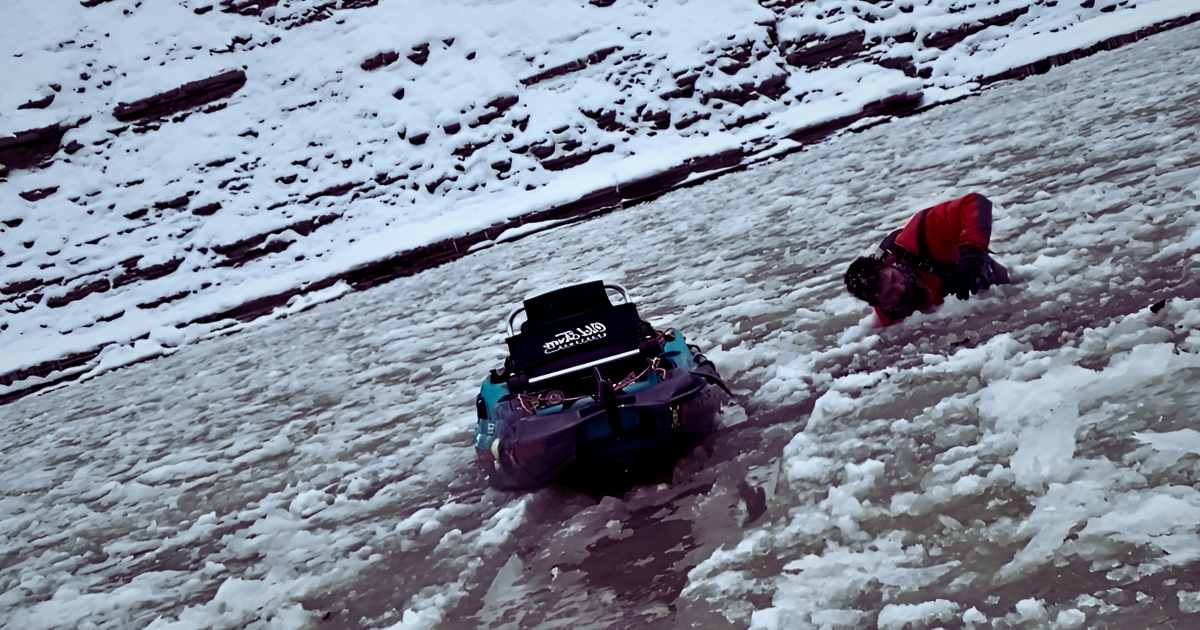

When your kayak flips, it can lead to some serious dangers. You might end up in cold water, and if you’re not careful, you could get hypothermia, which is very dangerous.
Hypothermia makes you shiver uncontrollably, feel confused and tired, and you could even lose consciousness in severe cases.
So, it’s important to be prepared and wear wetsuits or dry suits to stay warm. And if it happens, act quickly to warm up and get help if needed.
Potential Injuries and Hazards
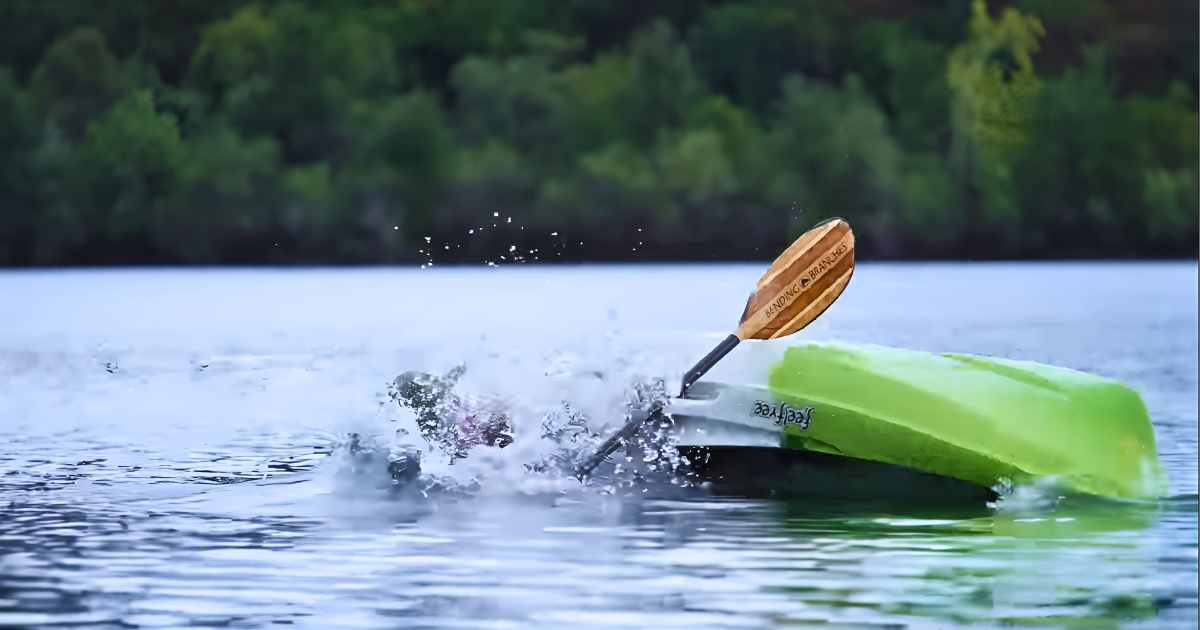

Another problem is the risk of getting injured. When you fall into the water, you can hit rocks or other hard things, which can cause cuts, bruises, or even broken bones.
There’s also a chance of getting tangled in ropes or straps connected to your kayak or gear, which can make things worse.
To protect yourself, always wear helmets and life jackets while kayaking, no matter how experienced you are.
Adapting to Water Conditions
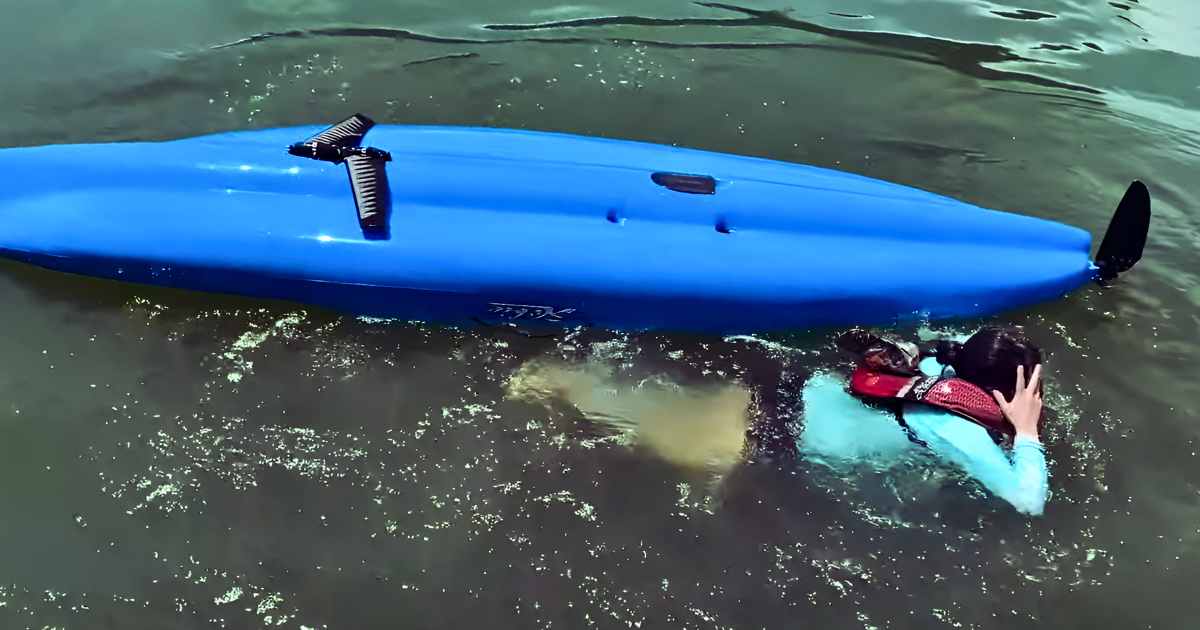

The water conditions also matter when you flip your kayak. Strong currents, rough waves, or high winds can make getting back in your kayak tough. You need to assess the situation and adjust your recovery plan accordingly.
For example, if the water is moving fast, it might be safer to swim to the shore while holding onto your kayak rather than trying to climb back in right away.
In calmer waters, you can flip your kayak upright and get back in from the water. Being aware of the water conditions can help you handle the situation better.
Step-by-Step Guide To Recovering From A Flipped Kayak
Knowing what to do if a kayak flips is crucial for any kayaker because it can save you in danger! To make this even easier, follow these steps:
Stay Calm and Take a Deep Breath
The first thing to do if your kayak flips is to stay calm. It can be a shocking and disorienting experience, but panicking will only make things worse. Take a deep breath and try to relax. Remember that you can handle this situation with a clear head.
Hold on to Your Paddle and Kayak
As soon as your kayak flips, hold on tightly to your paddle and kayak. This will prevent them from drifting away, making it easier to recover and get back in your kayak.
Check for Potential Hazards
Before attempting any movements:
1. Assess your surroundings for potential hazards.
2. Look for rocks, underwater obstacles, or any objects that could cause injury.
3. Ensure that you’re in a safe area before proceeding with the recovery process.
Release the Kayak’s Spray Skirt (if applicable)
If you are using a spray skirt, release it to allow for easy exit from the kayak. This will help you get out of the kayak quickly and safely in case you need to do so.
Get Out of the Kayak (if necessary)
If you feel it’s safer to exit the kayak, do so by pushing yourself out through the cockpit opening. Try to swim away from the kayak, keeping a firm hold on it and your paddle.
Retrieve Floating Gear
If you have any gear or equipment that has floated away, gather it back to your kayak or yourself. This includes water bottles, personal belongings, or any loose items.
Perform A Self-Rescue And Get Back In Your Kayak
To get back in the kayak, use the self-rescue techniques based on the water conditions:
In Calm Waters: Approach the kayak from the side, grab the cockpit rim, and kick your legs to push yourself up and over the kayak. Once your torso is over the cockpit, pull yourself in and shift your body to bring your legs inside the kayak.
In Fast-Moving Water: Swim to the shore while holding onto your kayak. This prevents the kayak from drifting away and ensures you reach the shore quickly.
Empty Excess Water
Once you’re back in the kayak, it may be partially filled with water. Use a hand pump or flip the kayak over to drain excess water to improve stability and control.
Resume Paddling
After recovering from the kayak flip, take a moment to gather yourself and ensure you’re okay. Then, resume paddling and continue your kayaking journey.
Different Techniques for Righting Your Flipped Kayak
When your kayak unexpectedly flips over, it can be a disorienting and potentially dangerous situation. However, with the right knowledge and practice, you can regain control and get back on track.
Here are a few techniques to help you right your flipped kayak:
Hip Flicks and Paddle Floats: Regaining Stability


Hip flick is one of the most common techniques used to recover from a kayak capsize. This technique uses your body’s momentum to rotate the upright kayak forcefully.
To perform a hip flick, follow these steps:
- Stay calm and maintain contact with your kayak.
- Position yourself parallel to the overturned kayak.
- Place one hand on the cockpit rim while keeping your other hand on the paddle.
- Use a quick and powerful rotation of your hips to flip the kayak back upright.
Another effective method for recovering from a capsized kayak is by utilizing paddle floats. These inflatable devices attach to one end of your paddle, providing additional buoyancy that helps stabilize the flipped kayak during recovery.
Self-Rescue Methods: T-Rescues and Eskimo Rolls
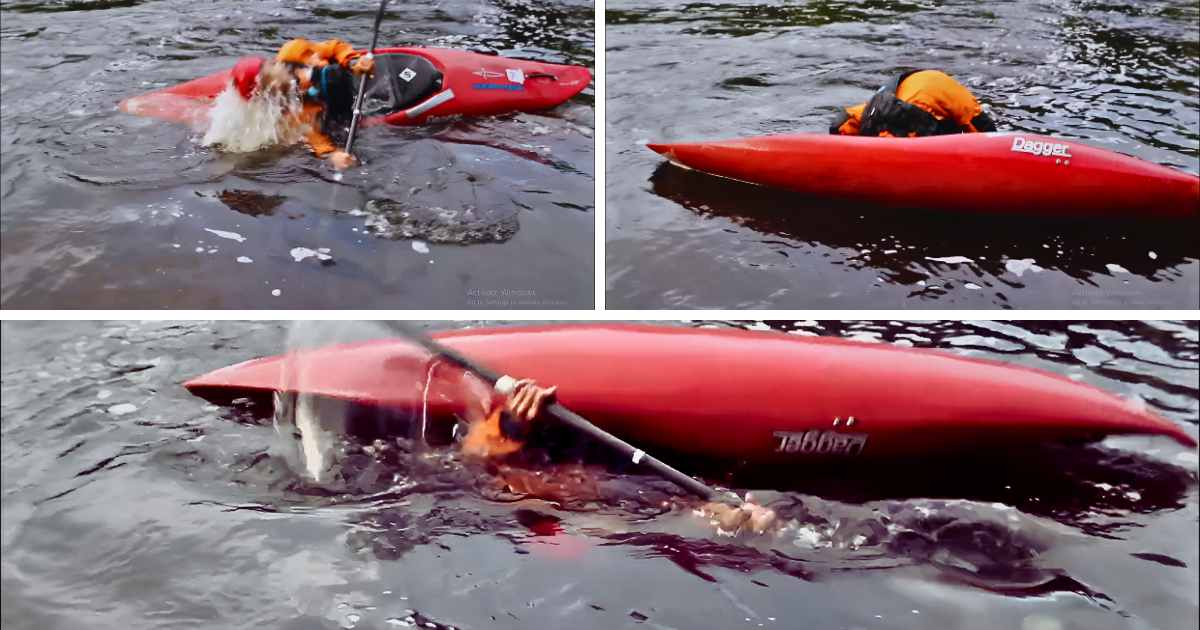

In addition to learning recovery techniques, it’s essential to know self-rescue methods in case you can’t get back in your kayak on your own.
The T-rescue is a common self-rescue method where another paddler helps you get back into your kayak. It requires working together and communicating, but it can be helpful when recovering alone is tough.
For more experienced kayakers, mastering the Eskimo roll is another way to self-rescue. With the Eskimo roll, you use your body and paddle to roll yourself upright while still underwater. It takes practice and skill. But it can be very useful when you need to get back up quickly.
5 Mistakes To Avoid when getting out of a flipped kayak
When it comes to kayaking, flipping over is always a possibility. It’s important to know what to do if you find yourself in this situation. Getting out of a kayak after flipping can be a challenging task, but there are some common mistakes that you should avoid.
Here are five mistakes to keep in mind:
Panicking and Rushing
When your kayak flips, it’s natural to feel a surge of panic and urgency to get out of the water quickly. However, panicking and rushing can lead to poor decision-making and potentially dangerous situations. Take a deep breath, stay calm, and assess the situation before taking any action. Keeping a clear head will help you avoid making hasty mistakes.
Letting Go of Your Paddle and Kayak
In the chaos of a kayak flip, losing grip on your paddle and kayak is easy. However, letting go of your equipment can make the situation worse. Hold onto your paddle and kayak tightly, as they are essential for self-rescue and getting back on track.
Attempting to Stand in Deep Water
Trying to stand up in deep water after a kayak flip is a common mistake that can lead to injuries or further capsizing. Remember that water may be deeper than it appears, and standing can cause instability. Instead, follow the proper self-rescue techniques to reenter your kayak safely.
Ignoring Safety Gear
It is important to wear or secure safety gear, such as life jackets and helmets when kayaking. These items are crucial for your protection and buoyancy in case of a capsize. Always wear your safety gear and ensure it fits properly before hitting the water.
Neglecting Practice and Preparedness
Not practicing self-rescue techniques and being unprepared for a kayak flip can lead to avoidable accidents. Regularly practice capsizing and self-rescue in controlled environments to build confidence and familiarity with the process. So please familiarize yourself with these techniques and practice them well.
Mastering Kayak Capsize Recovery: 7 Techniques to Handle a Flipped Kayak
Capsizing is an inherent risk in kayaking, and being prepared for it is of utmost importance. These essential tips will equip you with the skills and knowledge to handle a capsized kayak confidently and safely.
To simplify, let’s explore the seven crucial tips that will help you get back on your kayak easily after a flip.
Don’t Let Your Paddle Go!
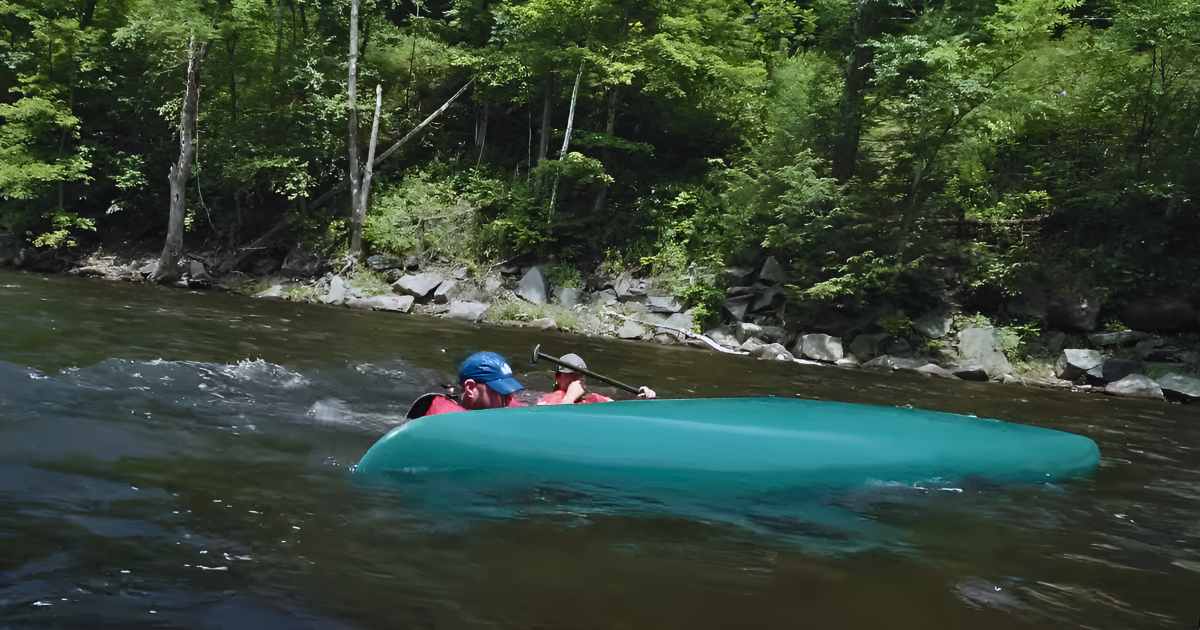

As soon as your kayak overturns, hold on tightly to your paddle and kayak. This prevents them from drifting away and makes it easier for you to recover and get back on your kayak.
Decide on the Best Recovery Method
Choose the most appropriate recovery method based on the water conditions and your comfort level. You can attempt self-rescue techniques in calmer waters, like flipping the kayak back upright and reentering the water. In fast-moving water, it might be safer to swim to the shore while holding onto your kayak.
Assess the Surroundings for Hazards
Before attempting any recovery techniques, look around to check for potential hazards. Be mindful of rocks, underwater obstacles, or any objects that could cause injury. Ensure you’re in a safe area before proceeding with the recovery.
Practice Flipping Intentionally
Intentionally practice kayak flips in a controlled environment to simulate real-life scenarios. This exercise will help you acclimate to the feeling of capsizing and build confidence in your ability to recover.
Master the Self-Rescue Techniques
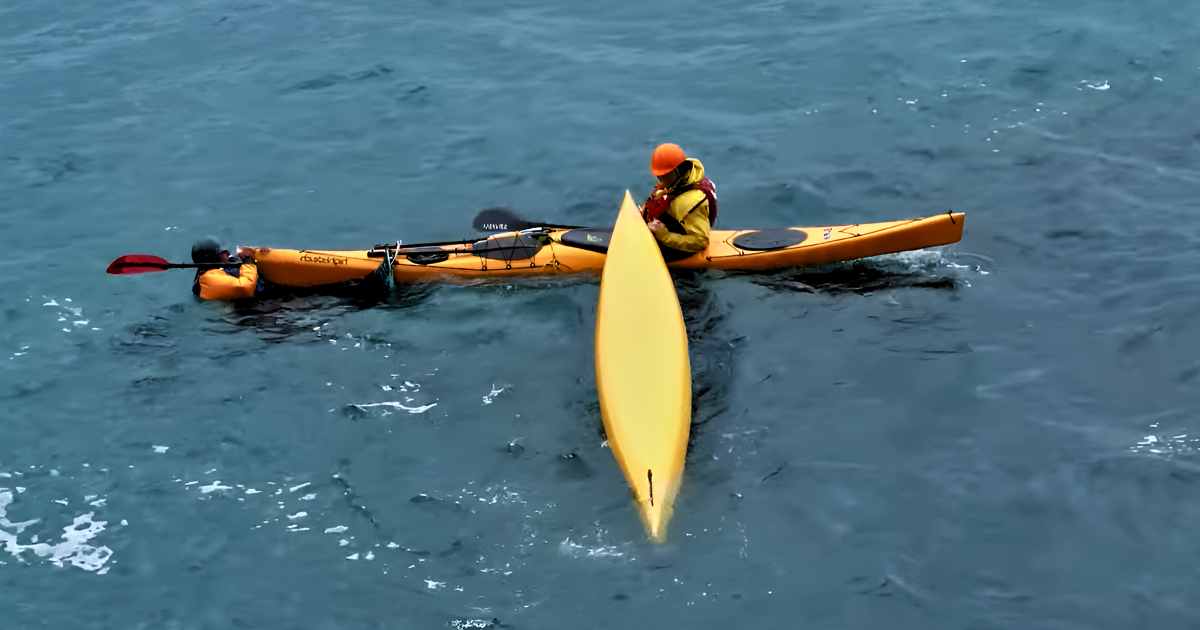

Learning self-rescue techniques is crucial for kayak capsize recovery. Familiarize yourself with techniques like the “T-rescue” (assisted by another paddler) and the “Eskimo roll” (rolling upright while still submerged). Practice these techniques regularly to build confidence and proficiency.
Learn the Eskimo Roll
For more advanced kayakers, mastering the Eskimo roll provides an additional layer of self-rescue capability. This maneuver enables you to roll yourself upright while still submerged in the water, allowing for a quick recovery in challenging situations.
Communicate and Signal for Help
If you are in distress or need assistance, use agreed-upon signals or whistle blasts to communicate with your paddling companions. Being able to signal for help can be vital in challenging situations.
Learn More
What Should I Do If My Kayak Flips?
If your kayak flips over, start by performing a wet exit safely by releasing your spray skirt (if applicable) and exiting the cockpit promptly. Then flip the kayak upright using the proper technique before reentering it.
How Do I Flip My Kayak Upright After It Capsizes?
To flip your kayak upright after it capsizes, position yourself next to the overturned hull while holding onto its side. Use a sweeping motion combined with a hip flick to bring the kayak back to its upright position.
What Should I Do If I Am In Deep Water And My Kayak Flips?
If you find yourself in deep water and your kayak flips, try to stay calm. Perform a wet exit, then swim next to the upside-down kayak and use a technique like the “cowboy scramble” or “T-rescue” to get back on top of it.
Final Word
In summary, dealing with a flipped kayak may seem challenging, but you can do it safely with the right know-how. Knowing the potential risks of a capsized kayak is important for mental readiness. To start, safely getting out of the kayak in the water should be your first move. Then, you can flip the kayak back up and get back inside.

